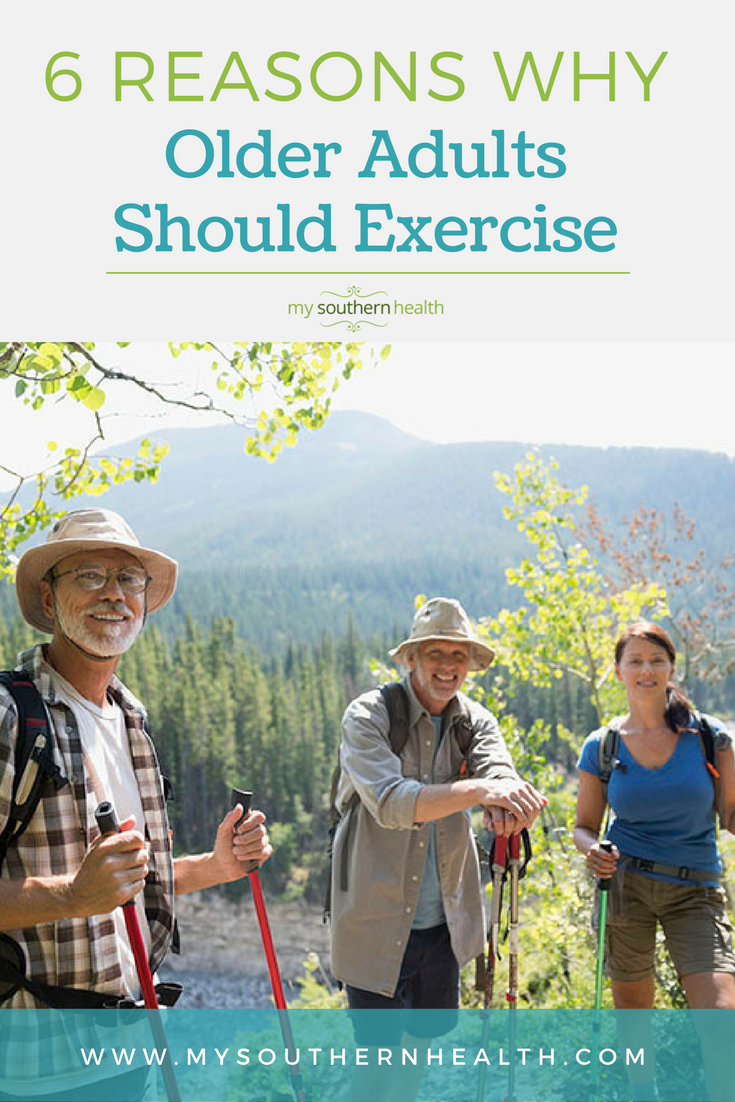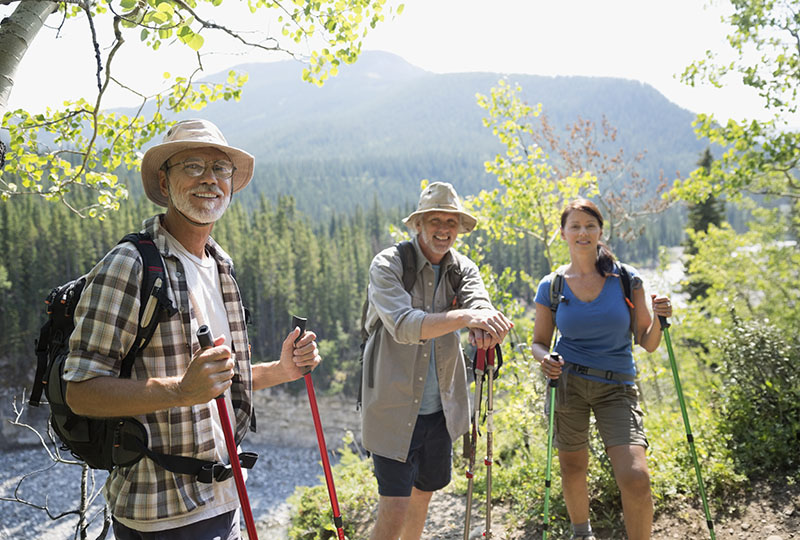Staying fit as a senior can help maintain independence as you age.
Exercise and physical activity for older adults is crucial — especially once you pass 50. Making exercise and physical activity a regular part of your life can improve your health and help you maintain your independence as you age. Exercising regularly can help prevent or delay many diseases, and can be part of effective treatment for chronic conditions including heart disease, arthritis and diabetes.
Regular, moderate exercise can help you:
- Reduce high blood pressure;
- Manage stress;
- Overcome balance problems and/or difficulty walking;
- Reduce feelings of depression;
- Improve or maintain cognitive function;
- Stay strong and fit enough to keep doing the things you love.
“If you want to keep moving, you’ve got to keep moving!” said Lori Cowan, ACE, AFAA, group fitness coordinator, Vanderbilt Recreation and Wellness Center. “I tell people to find something they really enjoy – then they’ll want to do it forever.”
Cowan recommends taking a class or working with a personal trainer in the beginning to make sure you get your form right.
If you’re starting an exercise routine for the first time or haven’t exercised in a while, you should see your doctor for a physical checkup before working out. Start out slowly and don’t compare yourself today with your fitness level 20 years ago. Build slowly, gradually increasing to at least 30 minutes five days a week. And stop if any activity causes pain.
“Listen to your body,” Cowan said. “If it says, ‘That hurts!’ then don’t do it. And always stay hydrated.”
Include exercise and physical activity.
Exercise is activity that is structured and repetitive such as weight training, water aerobics or a Zumba class. Physical activity includes things you do daily that get your body moving like walking the dog, sweeping, gardening, heavy housework or taking the stairs. The National Institute of Aging, in its Go4Life program, recommends a program that includes both and is structured to improve four things:
1. Endurance
Endurance, or aerobic, activities improve the health of your heart, lungs and circulatory system by increasing your heart rate and breathing. Endurance activities include walking, hiking or (wheelchair) rolling, sports like tennis or golf, indoor activities like swimming laps and outdoor activities like biking. Try to choose activities that are low impact – they’re better for your joints.
2. Strength
As you get older, even small changes in strength can make a real difference in function. That’s what makes muscle strengthening activities for older adults so important. Strength training – lifting or pushing weight – strengthens muscle and helps prevent bone loss. Strengthening the muscles around the joints can help you avoid injury, and improving bone density helps ward off breaks. Strength training can be done with or without weights at home, in the gym, standing or sitting in a chair.
3. Flexibility
Flexibility, or stretching, exercises give you more freedom of movement for your physical and everyday activities. Make sure you warm up adequately before you start working out. If you are doing only stretching exercises, warm up with a few minutes of easy walking. “Yoga is my favorite,” Cowan said. “It keeps your spine supple and you can start at any age.”
4. Balance
Some older adults are reluctant to exercise because of balance issues. Exercises designed to improve balance can prepare you for other activities and help prevent falls. Yoga and tai chi improve balance, as do exercises that increase lower body strength. Aqua sports are perfect because the water supports and holds you up. Walking poles can be used for support when walking or hiking.
A sturdy chair is your friend.
If you feel unsteady while you’re exercising, have a sturdy chair nearby to hold on to. Chair exercises for seniors can be incredibly useful for managing balance issues during training. Chair volleyball is an enjoyable aerobic activity, and chair yoga has been proven effective in increasing physical function and reducing stiffness in older adults with osteoarthritis.
The key is finding a fitness plan that’s right for you and sticking to it. Use your daily activities to move and establish an exercise program that incorporates endurance, strength, flexibility and balance. Staying fit will provide you with health benefits that can help you continue to enjoy life as you age.


